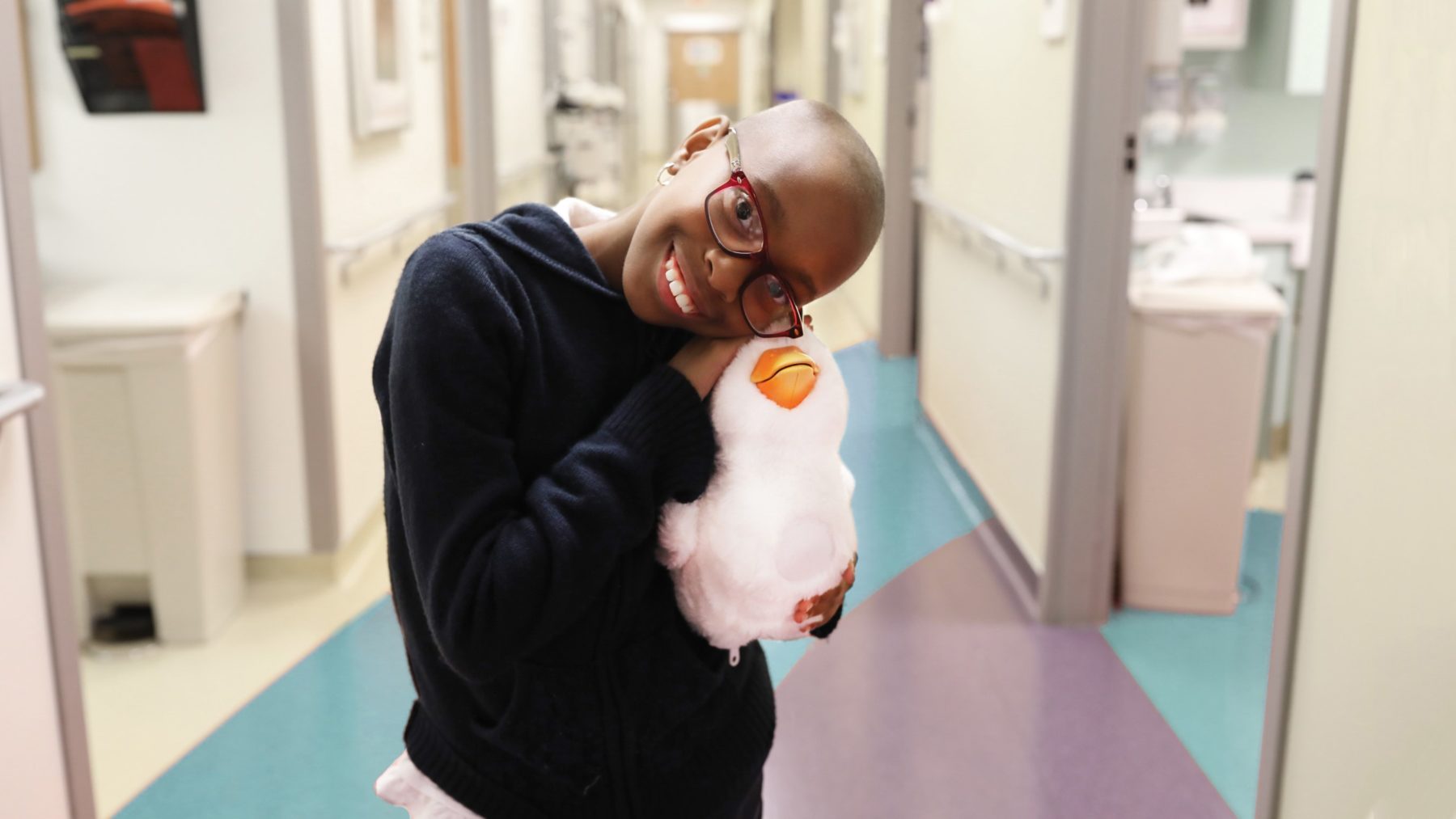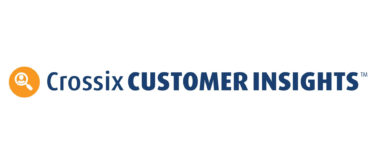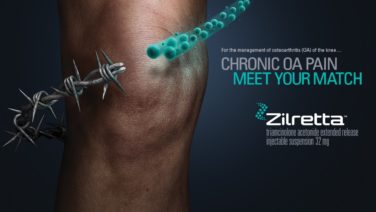The Digital Health Summit was added as a track to the Consumer Electronics Show (CES) 10 years ago to showcase the newest advances made in healthcare technology as well as discuss trends with executives from top companies in healthcare and technology. This year saw several products that help to advance personalized healthcare in multiple therapeutic areas.
Oncology: Child Care Companion
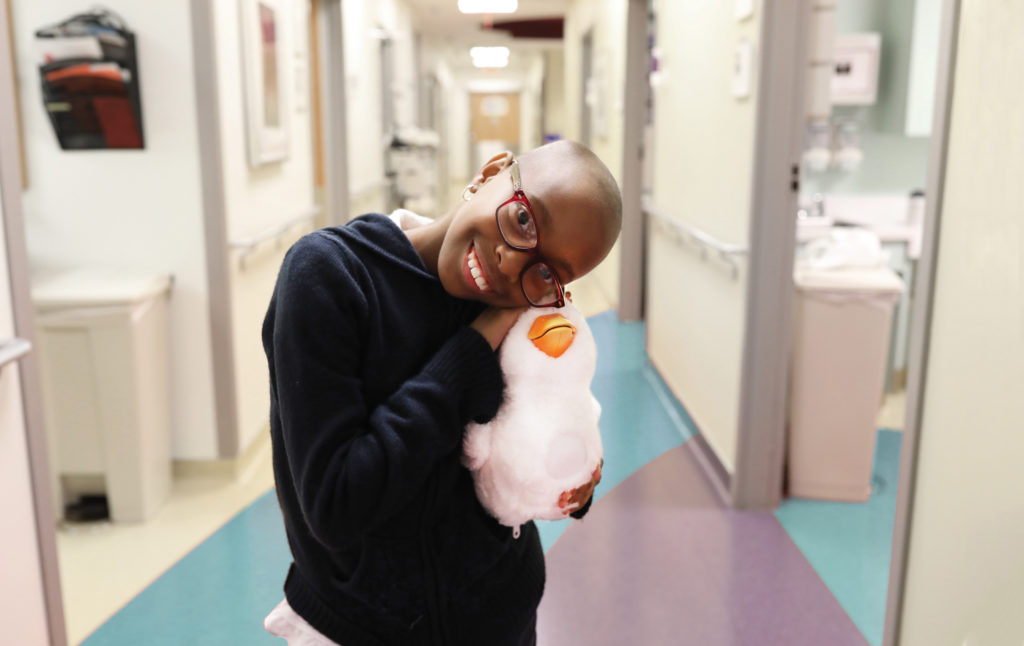 Recognizing that sometimes children with cancer need more than medicine to help cope with the disease, Aflac introduced the My Special Aflac Duck. This social robot, developed by Sproutel, helps children feel less alone during their cancer treatment. For instance, children can feed and bathe the duck via augmented reality, and it can even emulate patients’ moods as they go through treatment. The duck can also dance, quack, and nuzzle with patients when they need it most. For now, the duck will undergo further testing, but it could be available nationwide in winter of 2018-2019.
Recognizing that sometimes children with cancer need more than medicine to help cope with the disease, Aflac introduced the My Special Aflac Duck. This social robot, developed by Sproutel, helps children feel less alone during their cancer treatment. For instance, children can feed and bathe the duck via augmented reality, and it can even emulate patients’ moods as they go through treatment. The duck can also dance, quack, and nuzzle with patients when they need it most. For now, the duck will undergo further testing, but it could be available nationwide in winter of 2018-2019.
Hearing Loss: An Ear Fitness Tracker
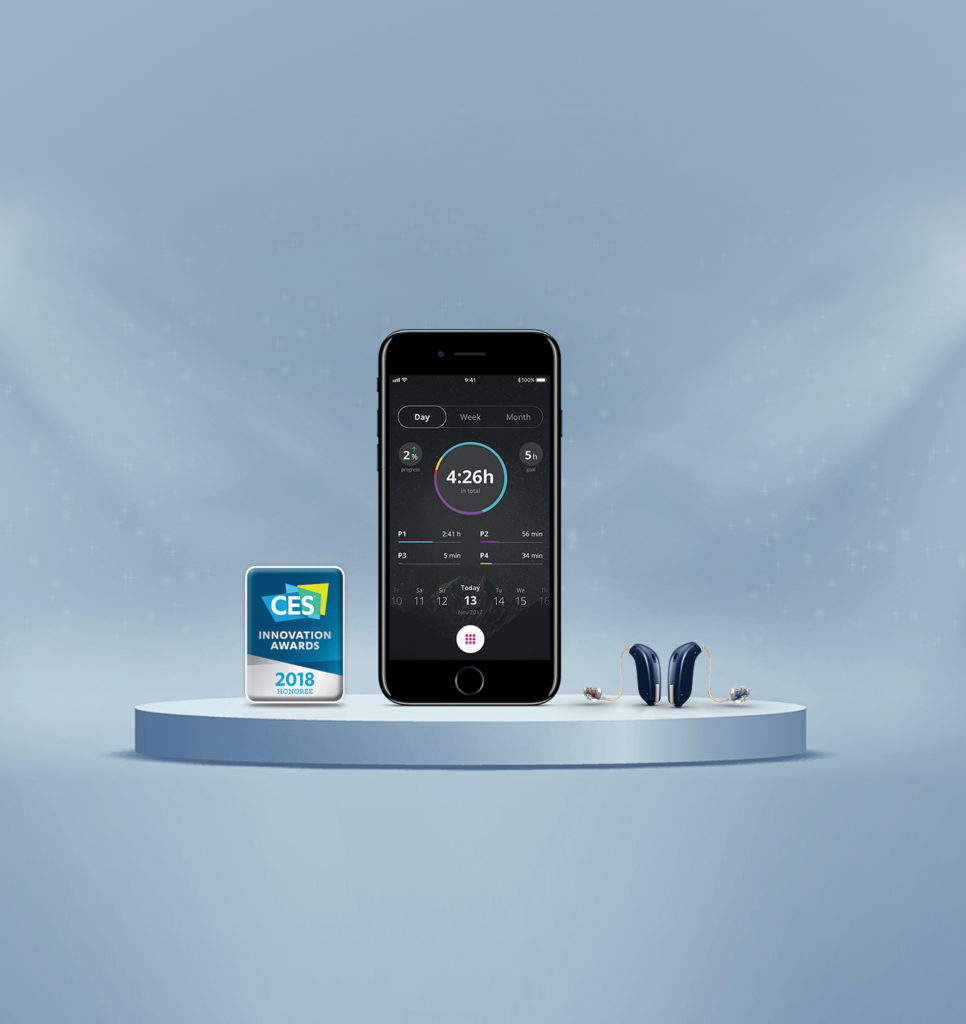 Oticon is already known for its internet-connected hearing aids, but at CES this year they introduced HearingFitness, the first hearing aid app dedicated to hearing fitness. The app is used in conjunction with Oticon Opn hearing aids and tracks hearing aid use, listening environments, and other behavior. It can also collate that data with measurements of heart rate, sleep patterns, etc. from other wearable devices in order to provide users with advice on ways to hear better, protect their hearing, and stay healthy.
Oticon is already known for its internet-connected hearing aids, but at CES this year they introduced HearingFitness, the first hearing aid app dedicated to hearing fitness. The app is used in conjunction with Oticon Opn hearing aids and tracks hearing aid use, listening environments, and other behavior. It can also collate that data with measurements of heart rate, sleep patterns, etc. from other wearable devices in order to provide users with advice on ways to hear better, protect their hearing, and stay healthy.
Vision Impairment: Artificial Vision
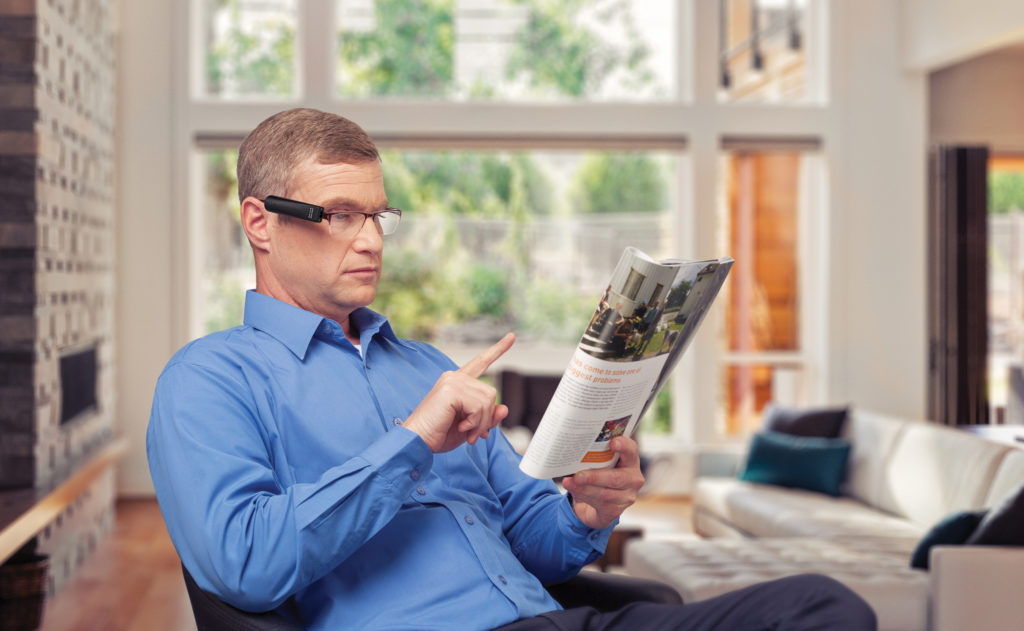 OrCam Technologies’ latest wearable artificial vision device for people who are blind, partially sighted, or have reading difficulties is the OrCam MyEye 2.0. The device’s lightweight and compact smart camera can be magnetically mounted on a pair of eyeglasses or sunglasses. The camera, paired with the artificial vision tech, can read printed and digital text aloud as well as recognize faces, colors, products, and money notes. The device is activated either via an intuitive pointing gesture or simply by following the wearer’s gaze.
OrCam Technologies’ latest wearable artificial vision device for people who are blind, partially sighted, or have reading difficulties is the OrCam MyEye 2.0. The device’s lightweight and compact smart camera can be magnetically mounted on a pair of eyeglasses or sunglasses. The camera, paired with the artificial vision tech, can read printed and digital text aloud as well as recognize faces, colors, products, and money notes. The device is activated either via an intuitive pointing gesture or simply by following the wearer’s gaze.
Paralysis: Restoring Hand Function
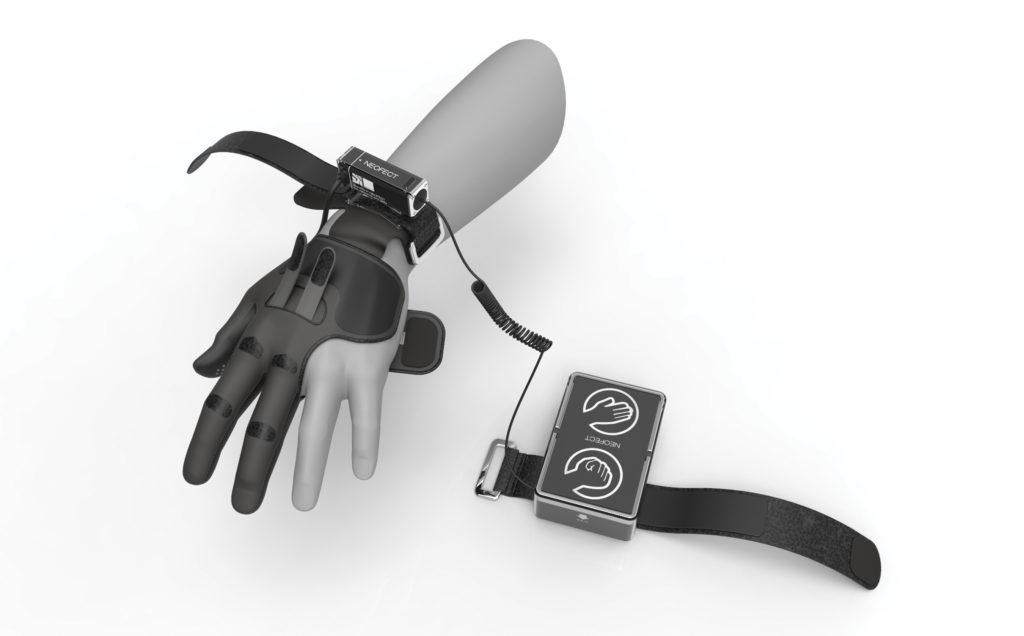 Patients with spinal cord injuries who have lost hand function often struggle with basic tasks such as opening a door, brushing their teeth, or grabbing a glass of water. NEOFECT’s NeoMano is a robotic glove worn on three fingers that helps to restore range of motion. The current iteration of the glove is connected to a control pad that is used to activate grip and release motions, but the company hopes to add both voice recognition and head motion to activate it. NEOFECT will launch a Kickstarter campaign for the glove later this year.
Patients with spinal cord injuries who have lost hand function often struggle with basic tasks such as opening a door, brushing their teeth, or grabbing a glass of water. NEOFECT’s NeoMano is a robotic glove worn on three fingers that helps to restore range of motion. The current iteration of the glove is connected to a control pad that is used to activate grip and release motions, but the company hopes to add both voice recognition and head motion to activate it. NEOFECT will launch a Kickstarter campaign for the glove later this year.
Sleep Deprivation: More Sleep in the Same Time
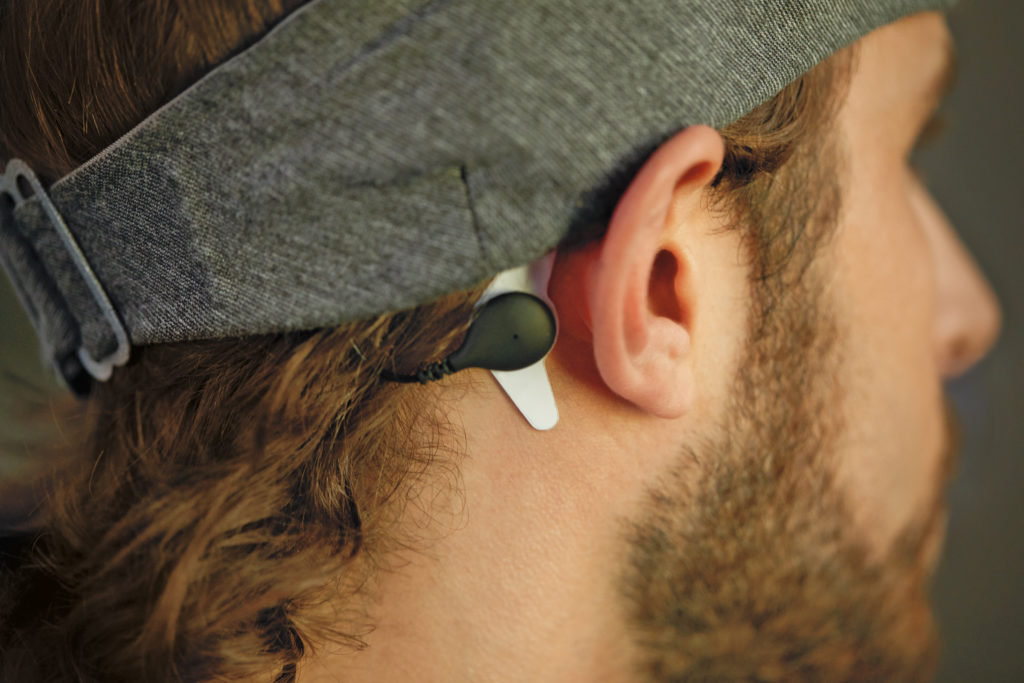 For those who struggle to get the recommended amount of sleep, it can be difficult to find time to catch those extra z’s. But with Philips SmartSleep, you don’t have to. This device uses two small sensors to detect periods of slow wave sleep and then intervenes with clinically proven technology to boost it in real time through customized audio tones. Studies have shown that 70% of chronically sleep-deprived users who have tried SmartSleep for just two weeks reported feeling less tired during the day.
For those who struggle to get the recommended amount of sleep, it can be difficult to find time to catch those extra z’s. But with Philips SmartSleep, you don’t have to. This device uses two small sensors to detect periods of slow wave sleep and then intervenes with clinically proven technology to boost it in real time through customized audio tones. Studies have shown that 70% of chronically sleep-deprived users who have tried SmartSleep for just two weeks reported feeling less tired during the day.

